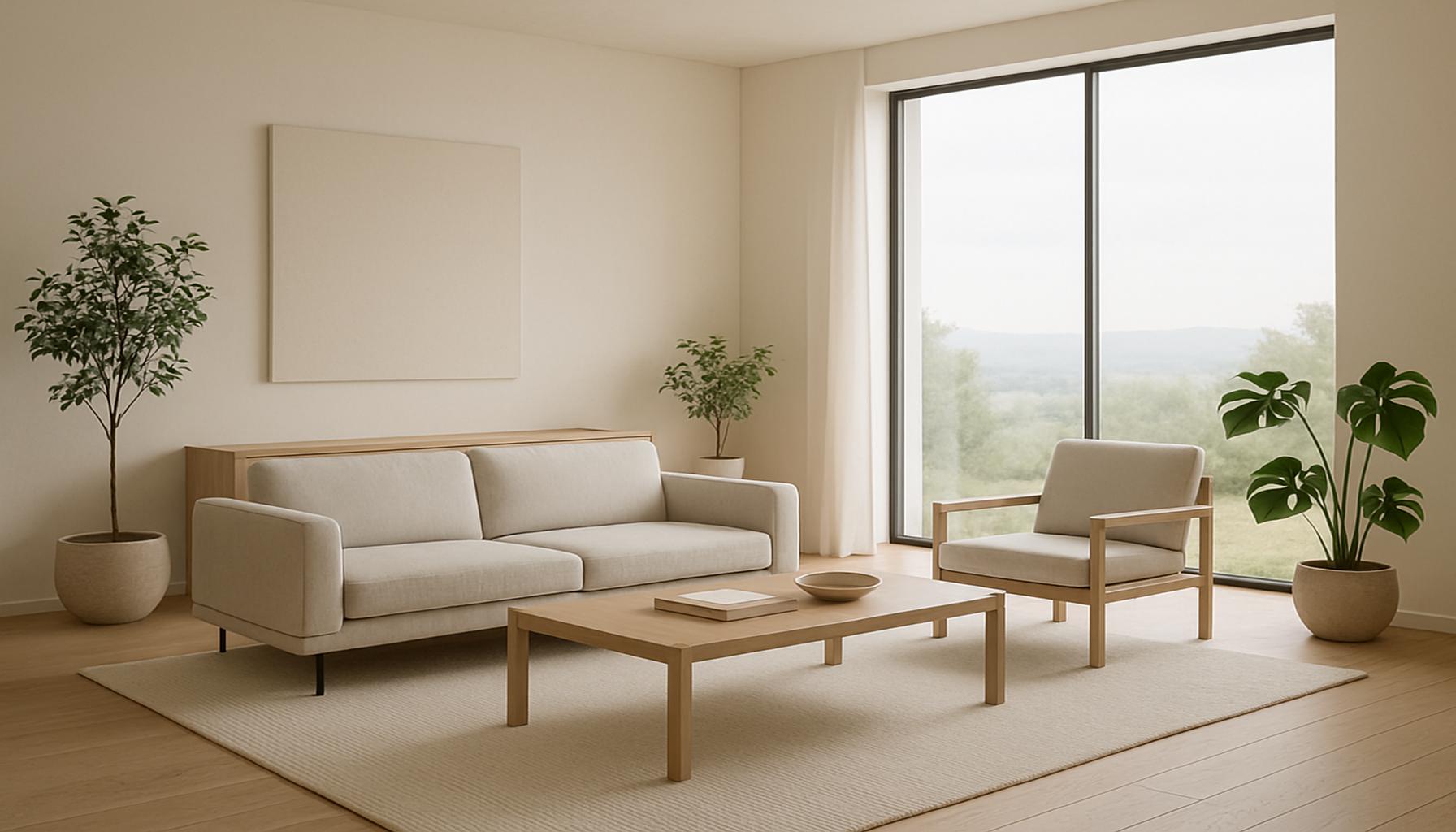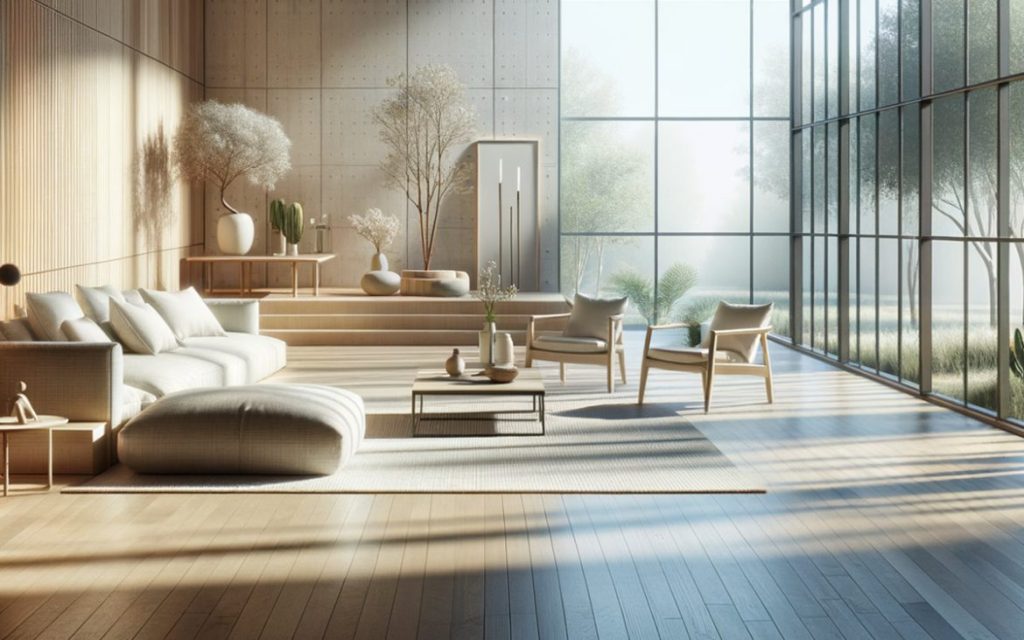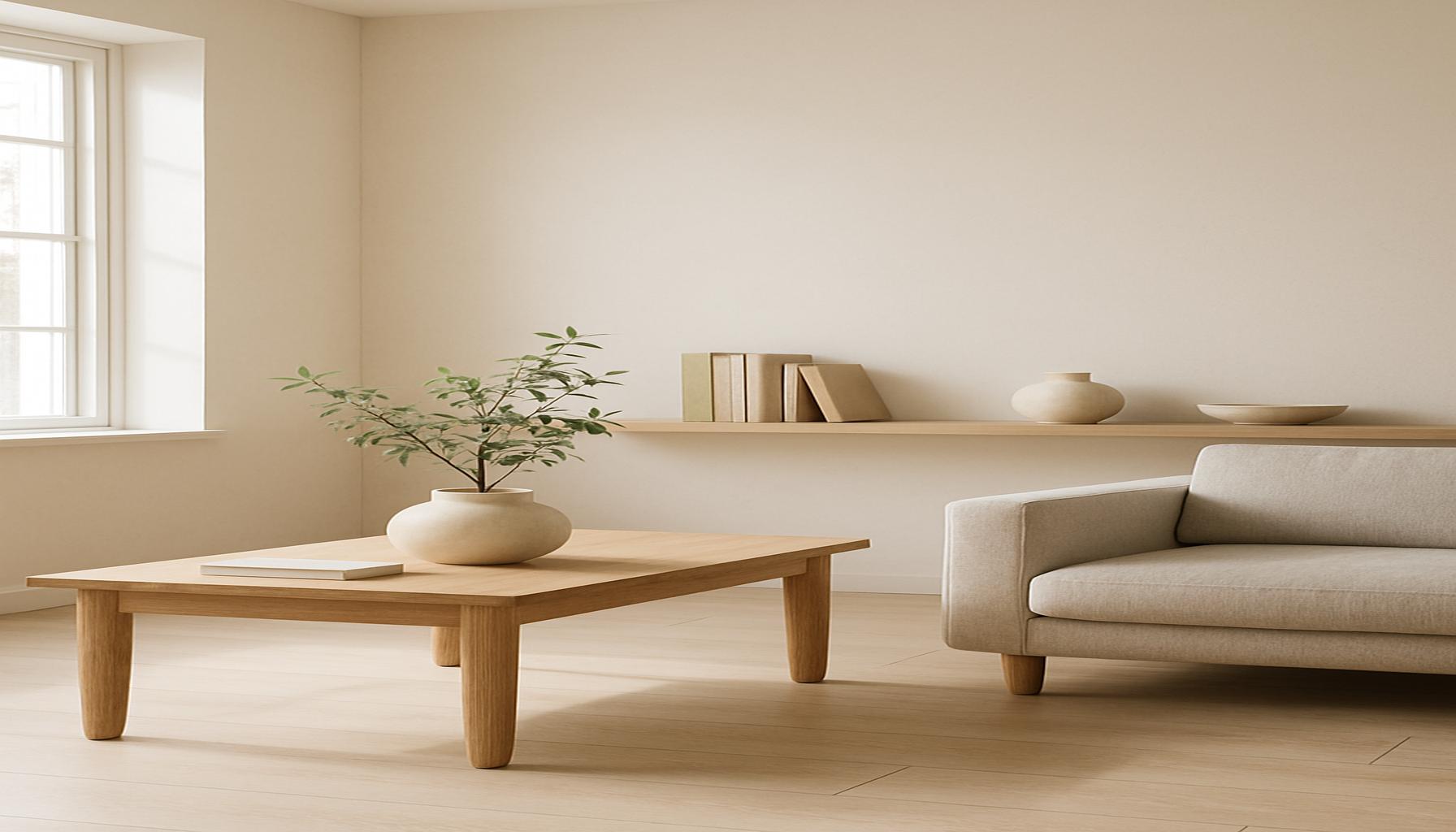Intentionality in Space Choice: How Minimalism Can Influence the Design of Functional Environments

The Rise of Intentionality in Design
The concept of intentionality in space choice has gained traction in recent years, particularly in urban settings across the United States. As cities diversify and housing prices increase, residents find themselves scrutinizing how they inhabit their homes. This evolving landscape has led to a pronounced urgency for creating functional environments that prioritize simplicity and purpose. Embracing minimalism offers a pathway to transformative living, altering not just the aesthetics but also the functionality of our spaces.
- Purposeful Design: When spaces are designed with intentional choices in mind, the living experience is significantly enhanced. For example, consider a studio apartment where every piece of furniture serves a dual purpose—like a sofa that converts into a bed. This approach not only optimizes space but also reflects the user’s lifestyle, making everyday life more efficient.
- Clutter Reduction: One of the hallmarks of minimalism is its emphasis on clutter reduction. By encouraging individuals to assess and discard items that do not serve a functional or emotional purpose, minimalism promotes a sense of calm and order within the home. This can be particularly beneficial in high-stress urban environments, where visual clutter can contribute to anxiety.
- Enhanced Functionality: Thoughtful layouts enable increased efficiency and comfort. For instance, open floor plans foster movement and interaction, while strategically placed storage solutions can minimize wasted space, making homes feel larger and more welcoming.
But how can minimalism influence the way we perceive and utilize space? It starts with a careful understanding of each element within a room and its contribution to overall functionality. By simplifying and focusing on essentials, designers can craft environments that are not only visually appealing but also serve practical needs. This can translate into creating cozy reading nooks with built-in shelves, ensuring that even small spaces provide opportunities for relaxation and enjoyment.
Key Benefits of Minimalism
- Increased Clarity: Clear, open spaces can significantly boost mental well-being. Research indicates that individuals who inhabit decluttered spaces report higher levels of stress relief and better concentration.
- Environmental Impact: Minimalism often aligns with sustainable design practices. Choosing fewer, higher-quality items reduces waste and encourages the purchase of sustainably sourced materials, which is increasingly important in today’s eco-conscious culture.
- Personal Expression: While minimalism may seem restrictive, it actually provides a canvas for individual creativity. By removing excess, homeowners can showcase meaningful objects, art, or personal collections that reflect their identity and values.
The pursuit of a more intentional space goes beyond aesthetics; it’s a pathway to fostering a lifestyle that champions clarity and purpose. In a world that often feels overwhelming, these principles can cultivate environments that truly resonate with our needs and aspirations, allowing us to live more deliberately and thoughtfully.
DISCOVER MORE: Click here to simplify your digital life
Understanding Intentionality and Minimalism in Space Design
Minimalism serves as a powerful framework for fostering intentionality in the design of functional environments. As urban dwellers face constraints on both space and resources, the significance of thoughtful design becomes increasingly evident. Minimalism allows individuals to prioritize their needs and desires, transforming how they engage with their surroundings. Rather than merely filling a space with furnishings, intentional design creates an atmosphere where each component serves a purpose, contributing to a cohesive experience.

The essence of intentionality lies in the decision-making process surrounding each element incorporated into a space. A functional environment is one that considers the relationship between physical form and user experience. By evaluating the role of various design elements, such as color, lighting, and layout, individuals can craft spaces that enhance well-being and productivity. This approach can yield unexpected benefits, as it shifts focus from aesthetics alone to the holistic functionality of living areas.
Intentionality in Furniture Selection
- Multi-Functional Pieces: Selecting furniture with multiple roles can drastically improve space efficiency. For instance, ottomans that double as storage can eliminate clutter while providing seating, ultimately making the room more versatile.
- Size Matters: Understanding the dimensions of your living area can guide choices that optimize movement and flow. Oversized furniture in a compact apartment can overwhelm the space, resulting in a chaotic atmosphere rather than a serene one.
- Quality over Quantity: Investing in fewer, higher-quality items tends to yield greater satisfaction and durability. This principle aligns with minimalism’s core tenet of reducing excess while promoting sustainability.
To operate effectively within limited spaces, urban designers and architects are increasingly adopting minimalist philosophies that prioritize intentionality. For instance, the implementation of flexible room layouts can allow for easy reconfiguration based on the occupants’ needs, promoting an adaptable living experience. In cities like San Francisco and New York, where space is at a premium, such designs are not just desirable but essential.
Mindful Space Utilization
Intentionality also dictates how we interact with our environments beyond furnishings. Consider the lighting: choosing natural light sources where possible not only brightens up a room but can also improve mood and cognitive function. Furthermore, integrating greenery into living spaces has been shown to promote feelings of tranquility and connection to nature, encouraging mindfulness and well-being.
Ultimately, the framework of intentionality in design urges us to move away from superficiality and towards a deeper understanding of our spaces. It empowers individuals to make choices that truly reflect their lifestyles and values, leading to a more harmonious existence amidst the chaos of contemporary living. The challenge, however, remains: how far are we willing to go in redefining our environments to align with the principles of minimalism and intentionality?
Exploring Functional Benefits of Minimalism
When discussing the intentionality in space choice, it’s essential to understand how minimalism not only beautifies a space but also enhances its functionality. The elimination of visual clutter creates a calming atmosphere that fosters productivity and creativity. A well-designed minimalist environment encourages occupants to focus on what truly matters, leading to better outcomes in both personal and professional settings.
Efficiency and Clarity in Design
Minimalism thrives on the principle of ‘less is more,’ and this is particularly relevant when it comes to functional environments. By opting for fewer components, designers can create more coherent layouts that improve traffic flow and usability. This unembellished approach allows for easier navigation, making spaces more accessible and functional.
Furthermore, functional environments designed with minimalism encourage the thoughtful selection of materials and furnishings. This intentional choice can lead to sustainability, as fewer resources are consumed, and the emphasis on quality over quantity often results in durable, timeless pieces that offer long-term value.
Emotional and Cognitive Impact
The psychological benefits of minimalistic environments should also not be overlooked. Spaces that employ intentional design choices minimize distractions, reducing stress and anxiety levels among occupants. Studies show that less clutter can lead to a clearer mind and improved focus, crucial in environments where mental clarity is essential, such as offices or study areas.
Moreover, the cohesive aesthetic fostered by minimalism can evoke positive emotional responses, enhancing overall well-being. This aspect is particularly significant in residential spaces, where the inhabitants’ sense of peace and comfort is paramount. A well-organized, minimalistic home can serve as a sanctuary from the chaos of everyday life.
Conclusion
The impact of intentionality in space choice becomes even clearer when we examine its connections to minimalism. This powerful design philosophy not only affects aesthetic appeal but also plays a vital role in the functionality, sustainability, and psychological well-being of each environment it enhances. As we explore these themes further, we uncover the profound effects that deliberate design choices can have on our experiences within these spaces.
| Advantages | Key Features |
|---|---|
| Enhanced Productivity | Fewer distractions leading to focused work |
| Sustainability | Quality materials that have a minimal environmental impact |
In summary, the exploration of how minimalism influences functional environments yields valuable insight into the intersections of aesthetic choices and practical benefits. By embracing intentionality in space selection, one can create spaces that are not only visually appealing but also fundamentally enriching for their occupants.
DIVE DEEPER: Click here for practical decluttering tips
Creating Harmony Through Thoughtful Design Choices
The principle of intentionality extends beyond mere furniture selection to encompass the broader scope of space design, which includes color palettes, spatial layouts, and even the phasing of room usage. This holistic approach can transform any living or working environment into a functional haven that resonates with the needs of its occupants.
The Power of Color and Texture
Color selection plays a crucial role in setting the ambiance of a space. Research shows that specific colors can evoke different emotions; for example, calming blues and greens can promote relaxation, while vibrant yellows and oranges can foster creativity and energy. By being intentional with color choices, designers can significantly influence the psychological responses of individuals within those spaces.
Texture is another essential aspect tied to intentionality. Incorporating various textures—smooth surfaces, rough fabrics, and soft cushions—engages the senses and invites touch, making environments more inviting. Minimalist spaces can sometimes feel stark, but by thoughtfully layering textures, designers can create a warm and welcoming atmosphere that encourages interaction and comfort.
Efficient Spatial Arrangement
Intentionality also manifests in the layout of a space. An effective design incorporates traffic flow considerations, allowing users to move freely without obstruction. Open floor plans, popular in modern homes, promote a sense of cohesion while still encouraging individual activities. For instance, a well-designed open kitchen adjoining a living area allows for social interaction while cooking, blending function and leisure seamlessly.
Furthermore, the rising trend of flexible spaces caters to the diverse needs of urban living. By employing movable partitions or furniture that can be easily reconfigured, designers allow individuals to adapt their environments as circumstances change, thereby enhancing functionality. In residential lofts, for example, sliding walls can create temporary private areas for work or relaxation, fostering both productivity and comfort.
Incorporating Biophilic Design
One of the most fascinating aspects of intentional space design is the growing trend of biophilic design, which seeks to create a connection between indoor environments and nature. By incorporating natural elements such as plants, stone, and wood, designers can foster a sense of well-being and tranquility. Studies have indicated that workspaces infused with greenery can improve employee satisfaction and productivity, illustrating the tangible benefits of integrating natural elements into functional environments.
Urban parks and green rooftops represent practical applications of biophilic principles. Initiatives in cities such as Portland and Chicago showcase how intentional green spaces contribute not only to aesthetic appeal but also to improved mental health outcomes for city dwellers. This relationship between space and nature reinforces the importance of intentional design in crafting environments that support holistic well-being.
As we navigate a world filled with distractions and obligations, the push towards intentionality in space choice becomes increasingly essential. The dialogue between minimalism and functionality invites us to reevaluate how we design our environments, making it imperative to innovate responsibly and meaningfully. Each decision, whether regarding color, layout, or biophilic integration, adds a layer of purpose to our everyday experiences and holds the potential to revolutionize urban living.
DISCOVER MORE: Click here to enhance your focus and clarity
Reimagining Our Spaces Through Intentionality
In a rapidly evolving world, the concept of intentionality in space choice serves as a guiding principle for creating environments that truly meet the needs of their users. By embracing minimalism, we are encouraged to strip away the superfluous and focus on what is genuinely essential, resulting in spaces that promote functionality and well-being. This article has explored the various dimensions of space design—from the strategic use of color and texture to the importance of efficient spatial arrangements and the incorporation of biophilic design.
As we reflect on these elements, it becomes clear that intentionality is not merely an aesthetic choice; it is a powerful tool that can shape our experiences. By consciously selecting colors that enhance mood and implementing layouts that facilitate movement and interaction, we can create harmonious environments that foster both productivity and relaxation. Furthermore, the integration of natural elements offers not only visual appeal but also significant mental health benefits, highlighting our innate connection to nature.
Moving forward, the challenge lies in questioning how we can continually innovate our living and working spaces. As cities grow denser and lifestyles become more demanding, the role of intentional design will only become more significant. Designers and occupants alike must recognize the influence of each decision made within a space, as these choices not only reflect our individual values but can also promote collective well-being. By prioritizing conscious design, we illuminate the path to functional environments that resonate deeply with our everyday lives, urging us to cultivate a more thoughtful and sustainable relationship with the spaces we inhabit.


